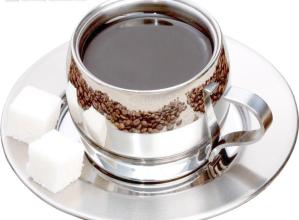Panamanian Coffee Taste introduction to Panamanian Coffee Flavor Manor
There are many ways to wash the coffee beans, but most of them are to remove the floating beans after picking the coffee fruits, then remove the pulp, and then soak the coffee beans in the fermentation tank. The enzymes in the water will soften the mucus attached to the endocarp of the coffee beans, and the natural yeast will decompose the sugar in the mucus. This process is called fermentation. After fermentation is complete, the coffee beans are moved to the sun to dry. During the drying process, the coffee beans need to be continuously stirred to ensure drying uniformity. Finally, the shelled beans are stored in the warehouse. After the raw beans are placed, they are shelled and bagged. The coffee thus processed tastes clean, emphasizing bright and lively fruit acids, as well as clear fruit flavors and flowers. On the basis of excellent quality, the price of this coffee bean is very close to the people. What makes this coffee bean special is that it consists of three varieties, 40% of which are rose-summer varieties, giving this coffee a distinct rose-summer flavor. The information obtained after consultation shows that due to the historical reasons of the estate, in order to pursue yield at that time, the early summer varieties were mixed with the coffee trees of Kadura and Kaduai. In order to facilitate picking, the coffee farmers did not reclassify them, but directly mixed the three varieties. After that, due to the fame of Rose Summer and the high price, the processing plant began to carry out fine washing treatment for such a coffee bean. Then in the land of Poquet, there is a bean with a particularly high cost performance. And has a very beautiful name-flower butterfly. She has 40% high-quality rosewood pedigree, consisting of three varieties of rosewood, cadura and caduai. She is planted in the Baru volcanic area of Poquet and grows in the volcanic area at an altitude of 1600 meters. The treatment plant adopts fine washing treatment. Panama's special microclimate leads to abundant rainfall in this area and a large temperature difference between day and night. In addition, the volcanic soil unique to volcanic areas, as well as meticulous harvesting and fine treatment, make this coffee in terms of thickness, acid, The fragrance of flowers is quite outstanding. In such a unique planting environment in Poquete, there is naturally not only a rose of jade, regardless of the flavor quality and value of coffee king; but drinking rose every day, I think, is still relatively extravagant, and even if there is no economic pressure, it is not like eating shark fin and bear paw every day. Coffee is also the same, dabbling in a wide range, in order to enjoy the fun of coffee taste in the Boquet region, which is also distributed with many excellent estates, in addition to the famous Emerald Manor, there are Elida Manor, Akaba Manor and other well-known estates, all producing high-quality boutique coffee. This is due not only to the excellent ecological conditions of Panama's Poquet region and the fertile volcanic ash soil of the Baru volcanic field. Another important factor is that the microclimate in the Poquet highlands of Panama is a unique and important resource for fine coffee in the Poquet region; this is the environment of Panama from east to west, which allows cold air currents to converge above 6500 feet through the Central Mountain Range, thus creating a variety of microclimates in the Poquet region, making its temperature and rainfall very suitable for plant growth. Therefore, coffee trees grown here are in good condition.

Important Notice :
前街咖啡 FrontStreet Coffee has moved to new addredd:
FrontStreet Coffee Address: 315,Donghua East Road,GuangZhou
Tel:020 38364473
- Prev

Indonesian boutique Manning Coffee Flavor taste Manor introduces the price of Indonesian coffee
Coffee flower Sunda Hejo processing plant is located in Bandung, West Java Province, the main coffee growing range is Malabar, about 1650 meters above sea level, volcanic soil (the coffee grown here has no smoky taste), springs, and the mountain area has a large temperature difference between day and night, so it is very suitable for coffee cultivation. Cooperative farmers are mainly local village residents, about 100 people, built a coffee treatment
- Next

An introduction to the characteristics, flavor and taste of Tanzania coffee beans suitable for blending.
Tanzania's main coffee producing area, located at the foot of Mount Kilimanjaro, is rich in volcanic soil. Some coffee trees planted here are more than 100 years old. Coffee was first introduced by Christians from Kenya to grow coffee. Coffee trees must be carefully taken care of, weeded and fertilized. And old branches must be cut off so that new branches can grow to maintain the quality of coffee beans.
Related
- Detailed explanation of Jadeite planting Land in Panamanian Jadeite Manor introduction to the grading system of Jadeite competitive bidding, Red bid, Green bid and Rose Summer
- Story of Coffee planting in Brenka region of Costa Rica Stonehenge Manor anaerobic heavy honey treatment of flavor mouth
- What's on the barrel of Blue Mountain Coffee beans?
- Can American coffee also pull flowers? How to use hot American style to pull out a good-looking pattern?
- Can you make a cold extract with coffee beans? What is the right proportion for cold-extracted coffee formula?
- Indonesian PWN Gold Mandrine Coffee Origin Features Flavor How to Chong? Mandolin coffee is American.
- A brief introduction to the flavor characteristics of Brazilian yellow bourbon coffee beans
- What is the effect of different water quality on the flavor of cold-extracted coffee? What kind of water is best for brewing coffee?
- Why do you think of Rose Summer whenever you mention Panamanian coffee?
- Introduction to the characteristics of authentic blue mountain coffee bean producing areas? What is the CIB Coffee Authority in Jamaica?

